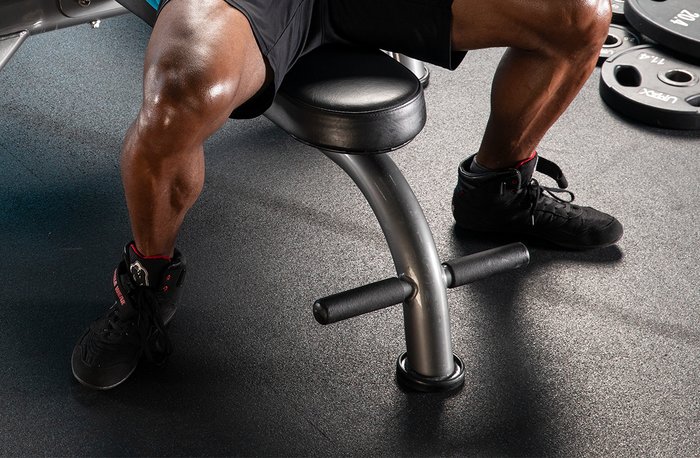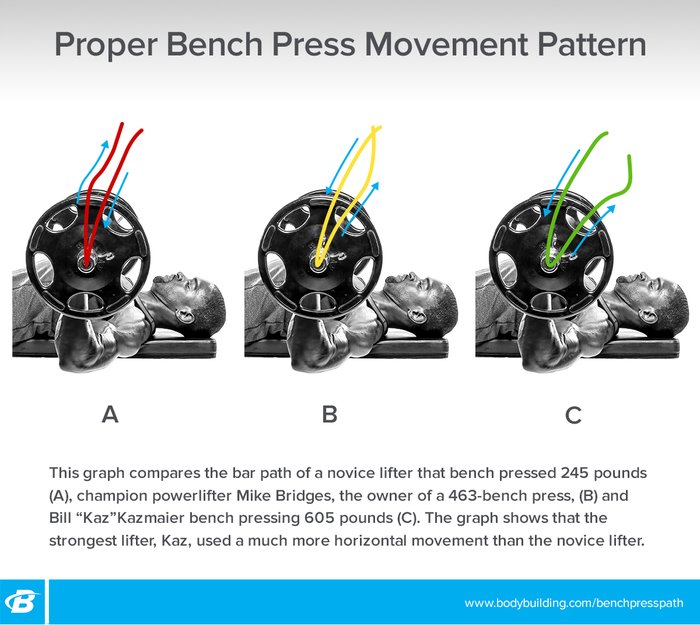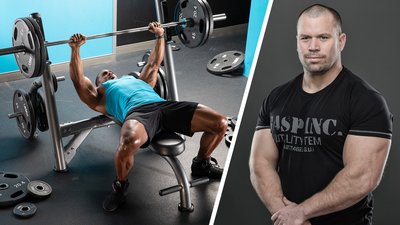Q: I'm a powerlifter who wants to know if using leg drive will help me bench press more weight. Some powerlifters dismiss it; others think it's the Holy Grail. What gives?
If leg drive isn't the Holy Grail, it's sitting right next to it on the kitchen counter. Here are the three most important things to know about using leg drive to increase your bench press:
- Pay attention to your foot position
- Harness every ounce of leg power
- Follow the "J" curve
Leg drive is whispered about in strength circles like it's some secret cure-all potion only the elite should have access to. Heaven forbid word should leak out to average folks struggling away in the gym! Sometimes the fitness industry has no shame.
Not that the value of the leg drive to a solid bench press is settled. One camp claims leg drive will turn bench press poodles into pit bulls, while another claims it's as useless as a pot of decaf.
I tend to fall into the former camp. First of all, keep in mind that the bench press is a full-body exercise. To lift the most weight, you need to remember your body is one complete system, one that includes your legs (and your hands). That's not to say good leg drive is all you need to turn a bench-pressing Pee-wee Herman into Jeremy "King of the Bench" Hoornstra. Even if it doesn't help you add a ton more weight to your bench, leg drive still will help you lift more safely. And if you don't believe that, just try doing a bench press with your legs up.
Pay Attention to Your Foot Position
Great bench press technique starts with the setup: finding the proper rack height, maintaining a tight upper back, setting your feet, and correctly positioning your hands and wrists. (I highly recommend watching Layne Norton's bench press technique tutorial to see a detailed breakdown of a properly-executed bench press.)

When setting up for a bench press, many lifters often overlook their foot position. This nuance is critical for insuring stability and maximum leg drive. Stance width is a personal preference but, generally speaking, the closer together your feet are, the easier it is to make the mistake of lifting your butt off the bench. Once that happens, you can pretty much kiss your lift goodbye.
I recommend finding a foot position for benching that puts your shins near vertical. If you have an extreme arch, you may want to set your feet way back underneath you and go up on your toes. In this position, you're trading maximal leg drive for a big arch. If you're an advanced lifter and can move more weight this way—and do it safely—run with it.
If you're able to take this stance with your feet flat, you'll develop the highest amount of tension in your upper body. This allows you to assume a stable position so you can generate the greatest amount of leg drive. If you're a shorter lifter who cannot get in this position, you're still in luck: Powerlifting meets allow shorter lifters to put platforms or plates under their feet. (Don't even think about getting your feet too close together in a powerlifting meet, though. Doing so for a contest lift is a universal violation of the alphabet soup of rules governing the powerlifting federations.)
Harness Every Ounce of Leg Power
Once you've established your footing, you can't just press your feet straight into the ground and do a hip thrust. Try that, and your butt will come off the bench. Instead, cue yourself to spread outward (like many folks do in the squat) and drive your toes into the front of your shoes as you press the barbell. Imagine that you're doing a leg extension with your feet flat on the floor.
As you drive your toes into the floor, imagine you're also trying to spread the floor apart with your feet. This technique will extend your hips without further extending your lumbar spine.
Follow the "J" Curve
In the past, I've talked about the desired J-curve bar path. Your leg drive should match this. Remember, you are initiating force backward toward the bar, not straight up, to have it complement the ideal bar path. Don't worry about pushing yourself off the bench. Your upper back is tight and dug into the bench so firmly you won't go anywhere.

Strong leg drive catalyzes tightness in the bench press and helps you start driving the barbell up off your chest from the bottom position. This is a huge advantage because the bench press follows an ascending strength curve: The muscle tension needed to move the weight decreases throughout the range of motion such that the lift will typically feel easier as you near full extension. Engaging your legs helps move the barbell the first couple inches off your chest. Once the bar is past that point, it will travel over the strongest pressing muscles. Following the J-curve path allows your chest, shoulders, and triceps to work together synergistically so you can lift the most weight.

